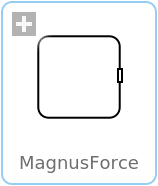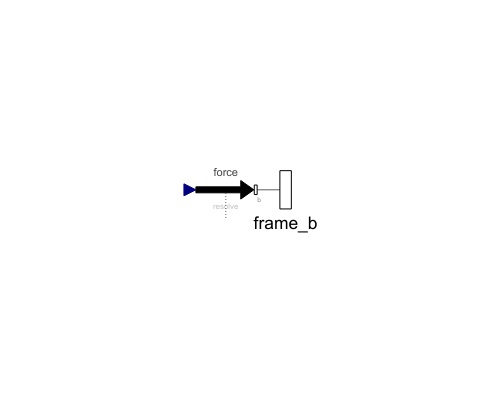WOLFRAM SYSTEM MODELER
MagnusForceComponent calculating the magnus force |
|
Diagram
Wolfram Language

SystemModel["EducationExamples.Physics.FreeKick.Components.MagnusForce"]

Information
- FM = (1/2) ρ v^2 A CL
where ρ is the air density, v is the velocity of the ball, A is the cross-sectional area of the ball, and CL is the lift coefficient. The lift coefficient is a tricky variable to describe and is normally measured from experiments. In Physics for Game Programmers, experimental data is used to create a function to describe CL. This results in the expression:
- CL = 0.385(r*ω/v)^0.25
where r is the radius of the ball, ω is the angular velocity, and v is the velocity of the ball.
Parameters (1)
| rho |
Value: 1.225 Type: Density (kg/m³) Description: Density of the fluid (1.225 kg/m^3 for air) |
|---|
Connectors (1)
| frame_b |
Type: Frame_b Description: Coordinate system fixed to the component with one cut-force and cut-torque (non-filled rectangular icon) |
|---|
Components (1)
| force |
Type: WorldForce Description: MultiBody force component applying the Magnus force |
|---|
Used in Components (1)
|
EducationExamples.Physics.FreeKick.Components Ball subject to magnus forces. |

